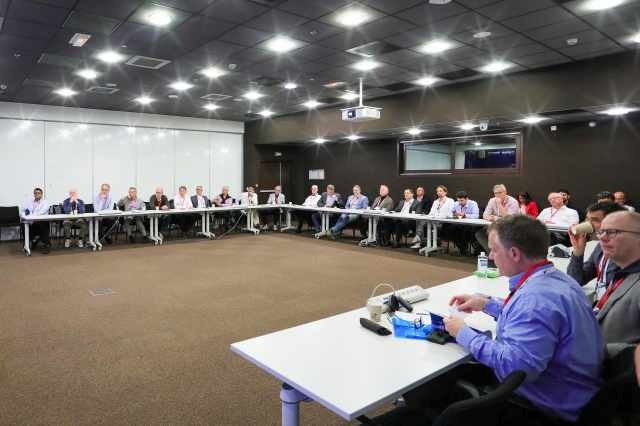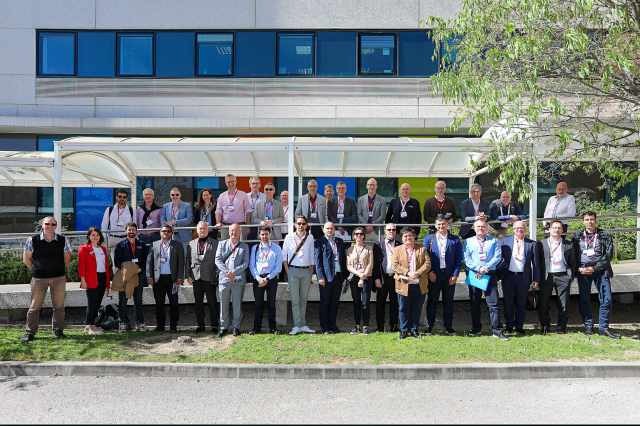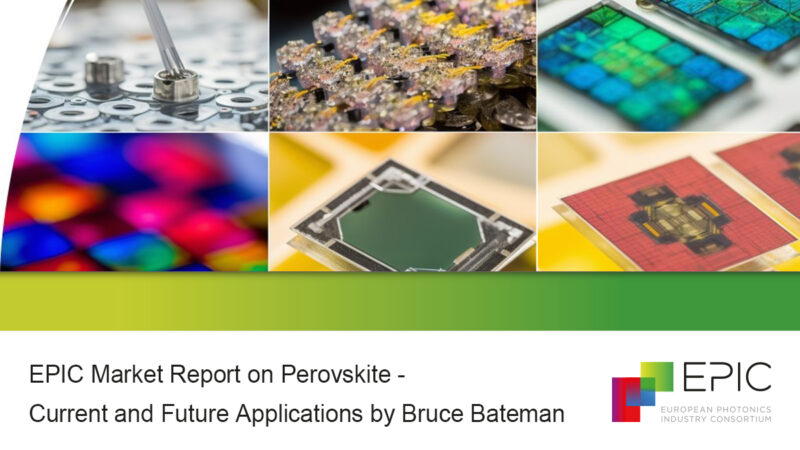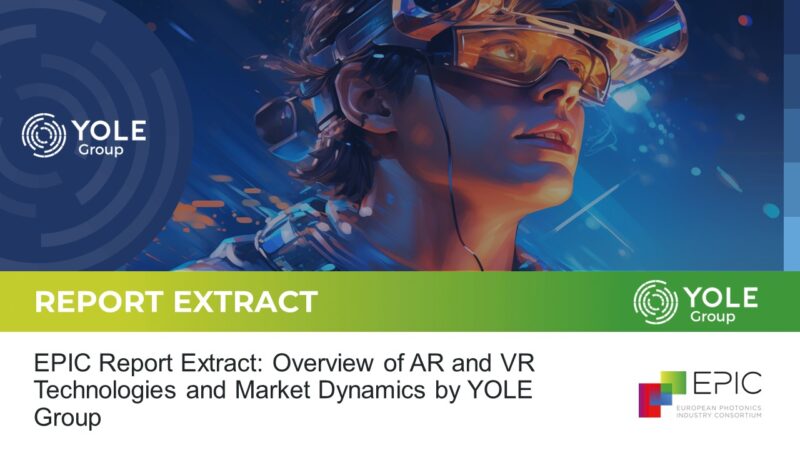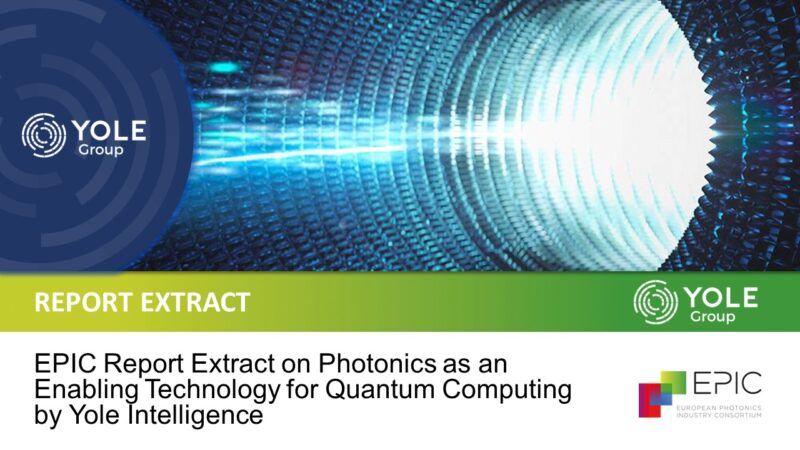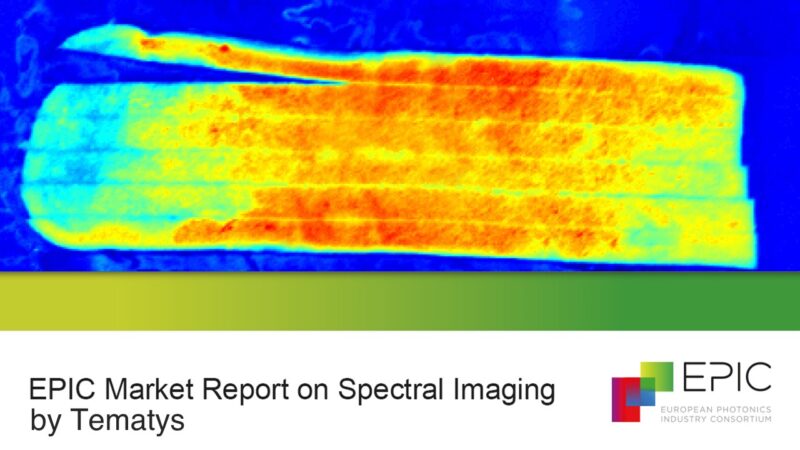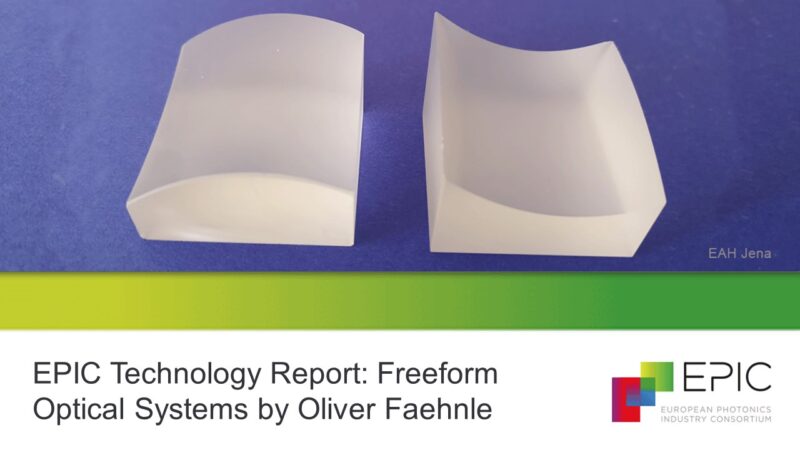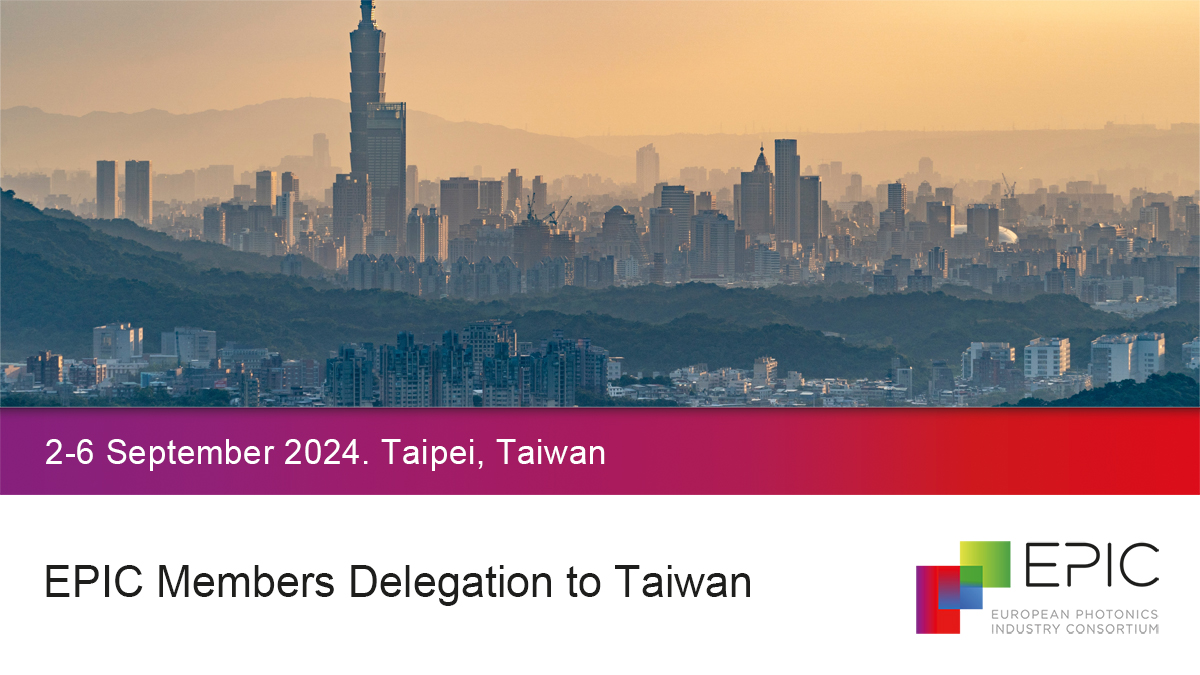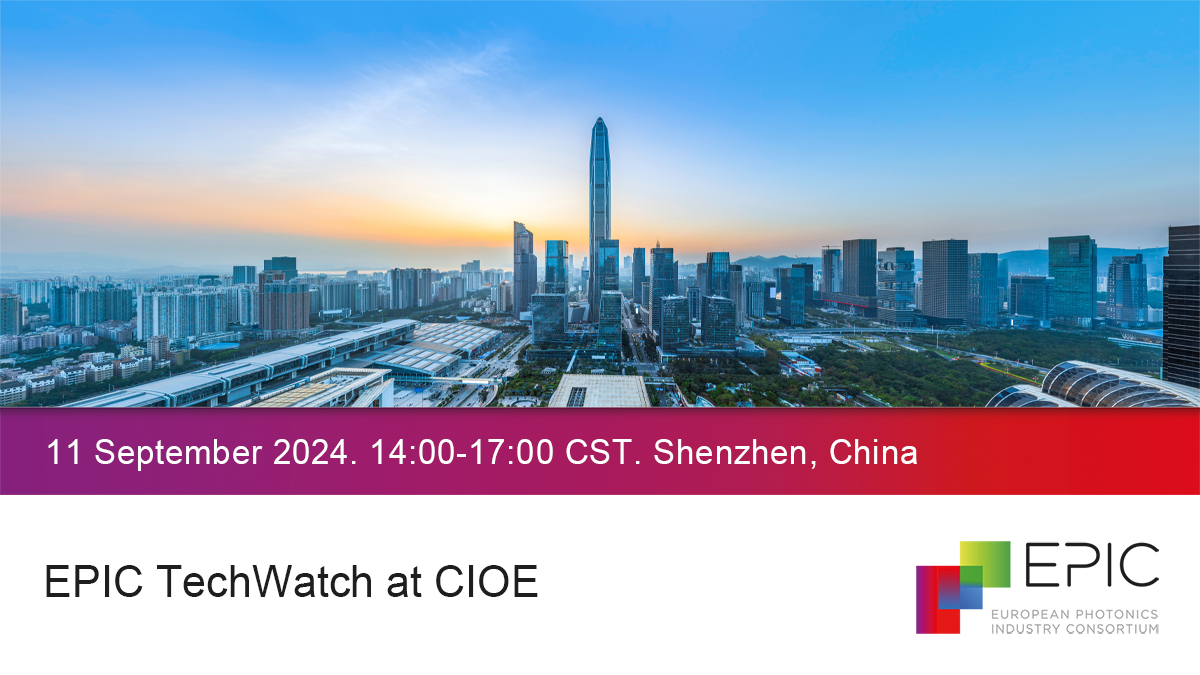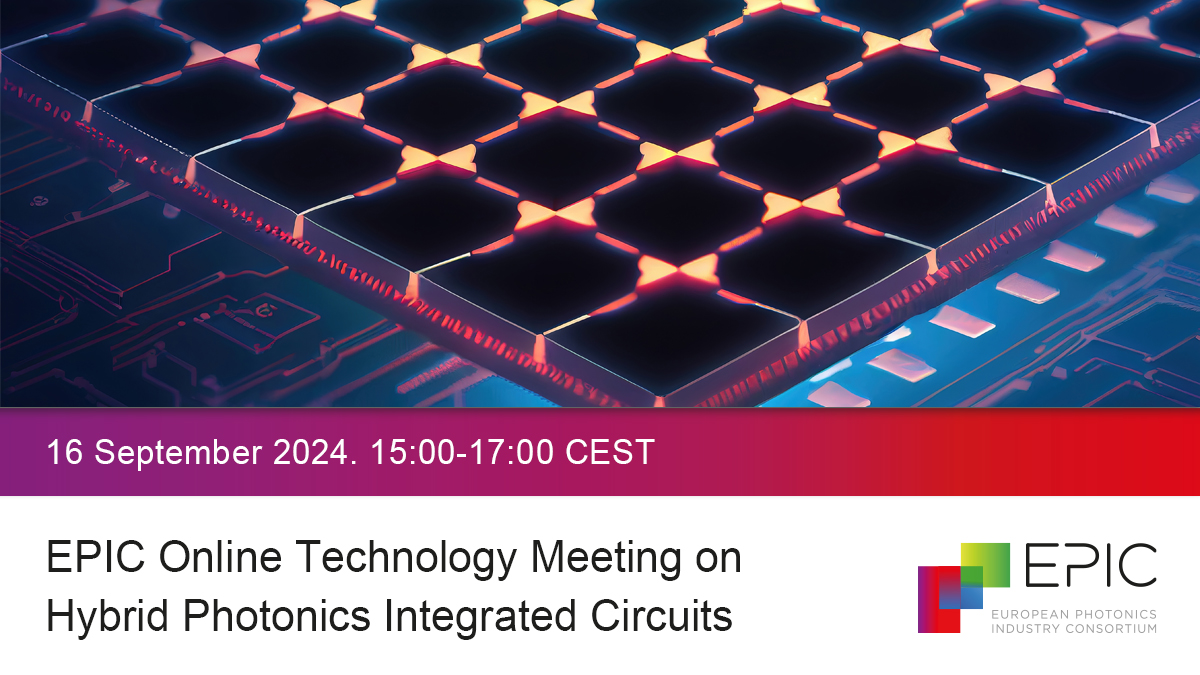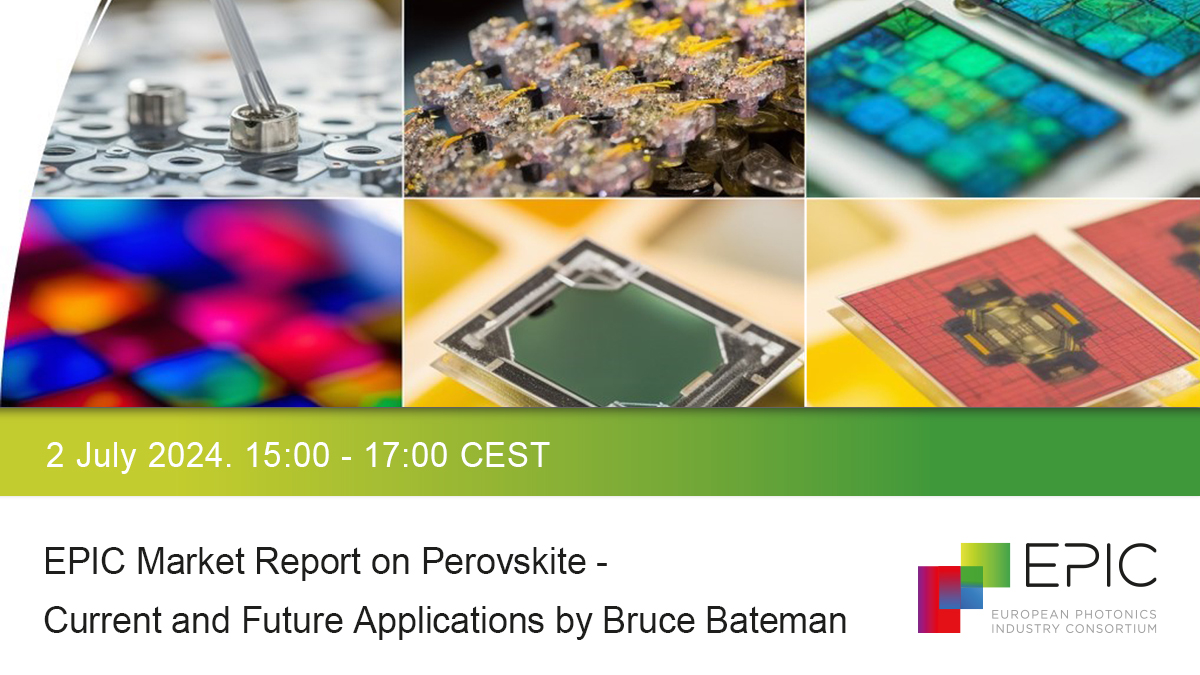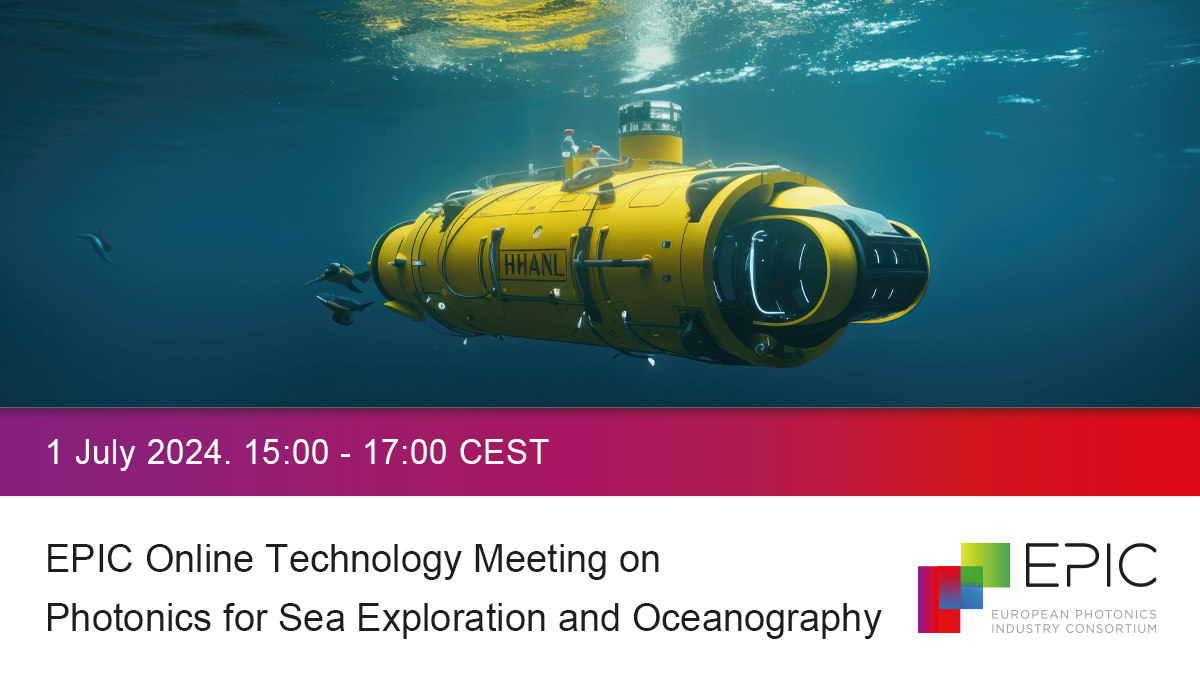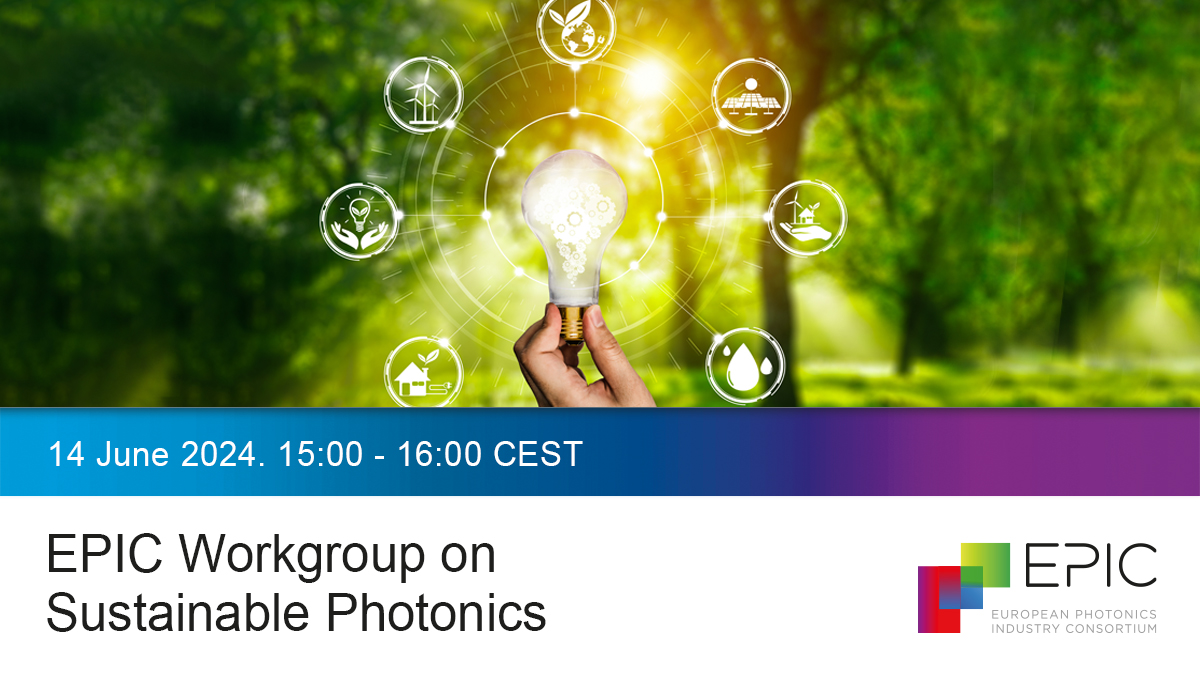Photonics in the beach
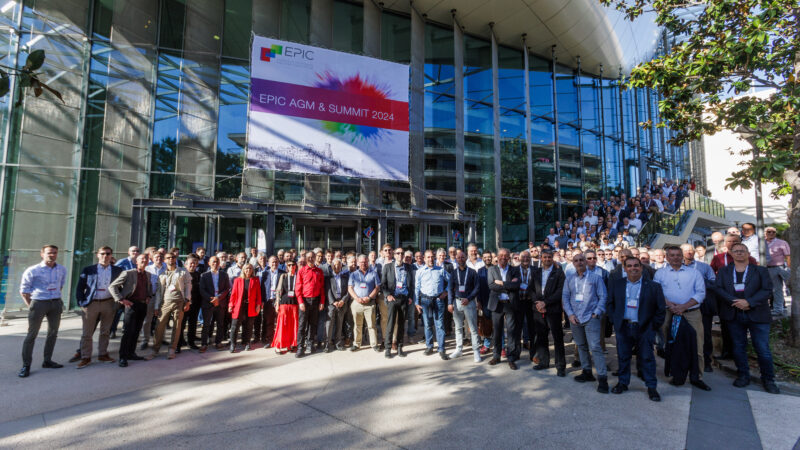
The EPIC Annual General Meeting & Summit gathered more than 350 attendees in Juan Les Pins, France. This small village on the French Riviera provided an exceptional setting for networking activities such as the EPIC Run or an early morning swim. (go to Flickr album)
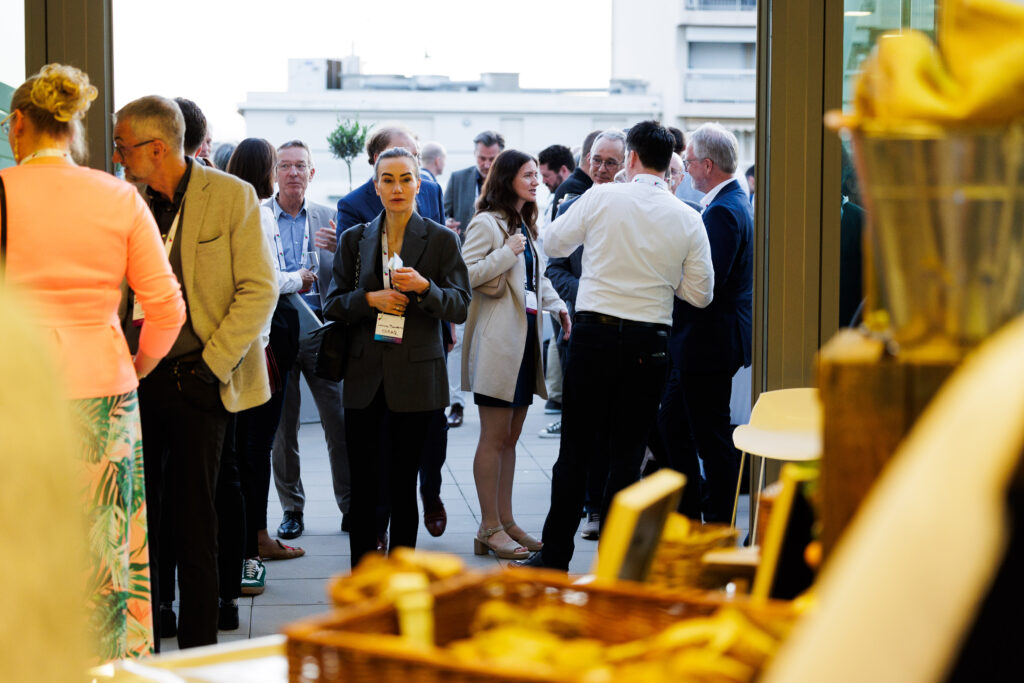
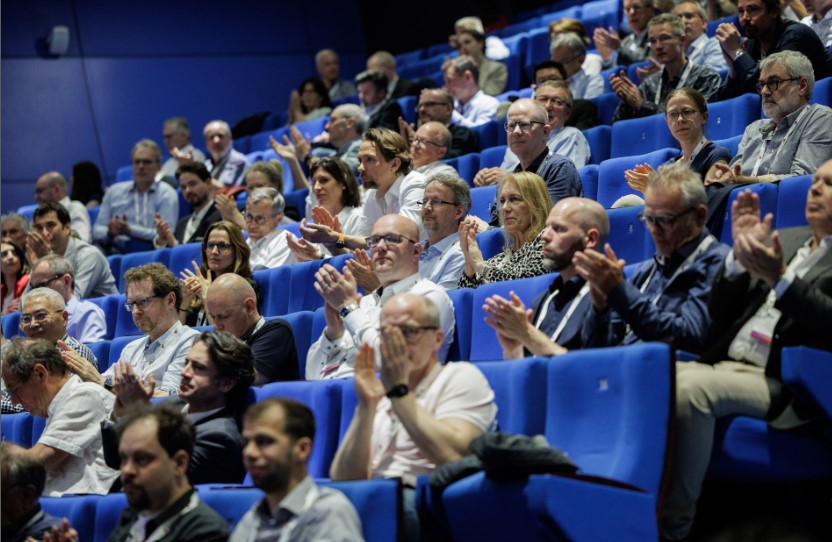
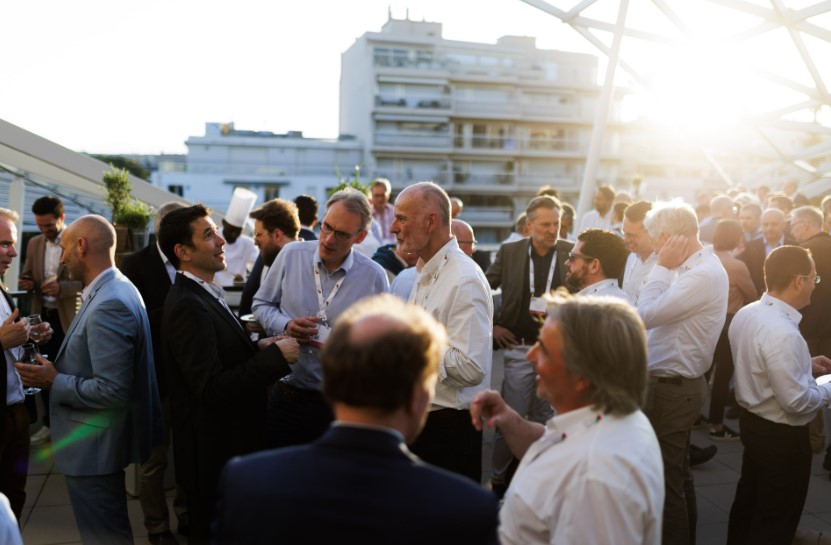
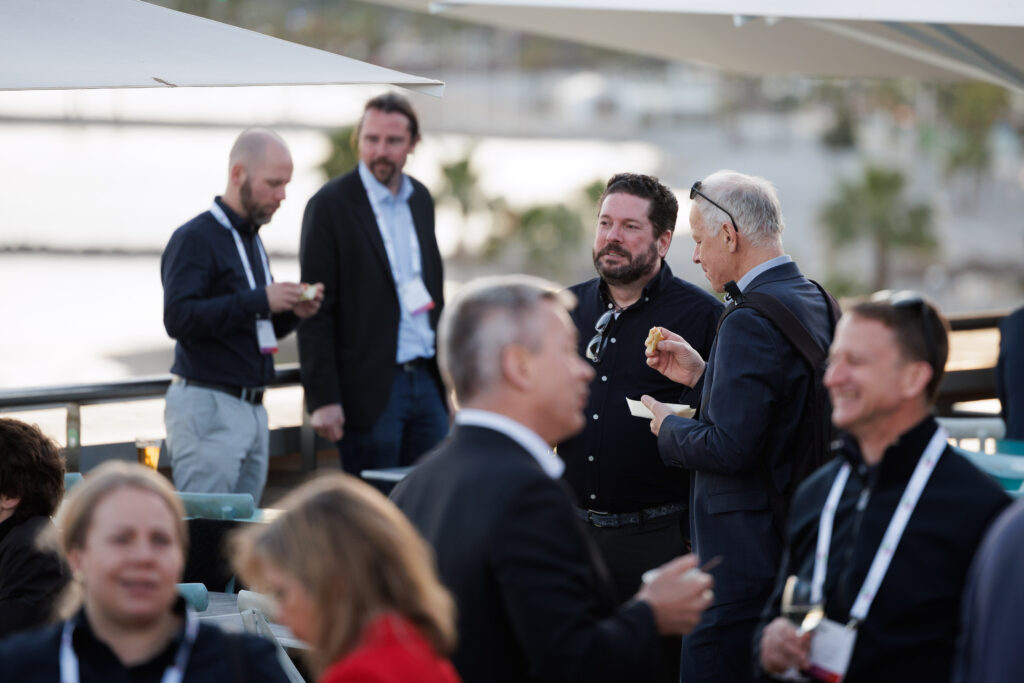
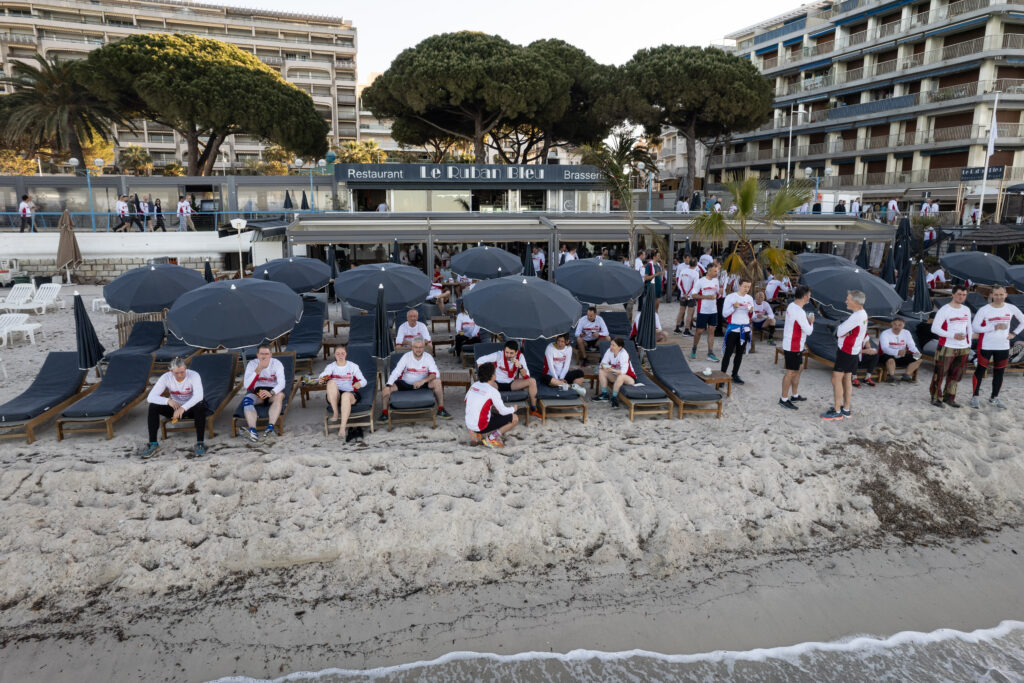
Björn Dymke joins the EPIC Board of Directors
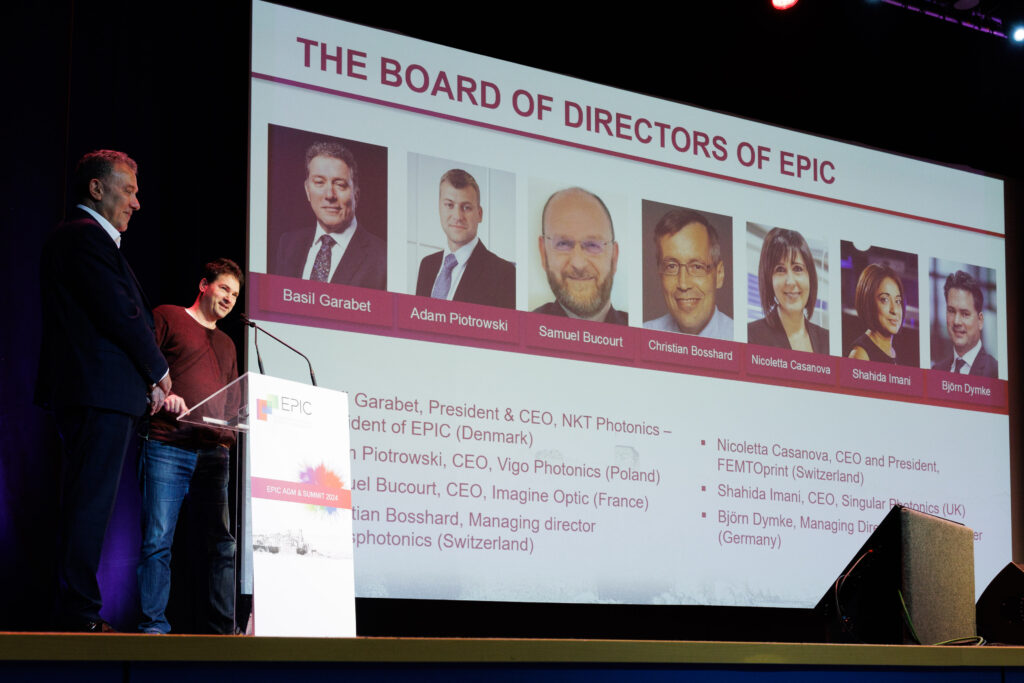
During the event we welcomed Björn Dymke, Managing Director of TRUMPF Laser, to the Board of Directors. With extensive experience in photonics technology and a deep understanding of the industry, Dymke will bring valuable insight and perspective to EPIC’s mission of promoting and advancing the photonics industry in Europe (download to the press release).
Recognitions Award to Axel Kupisiewicz and Viacheslav (Slava) Artyushenko
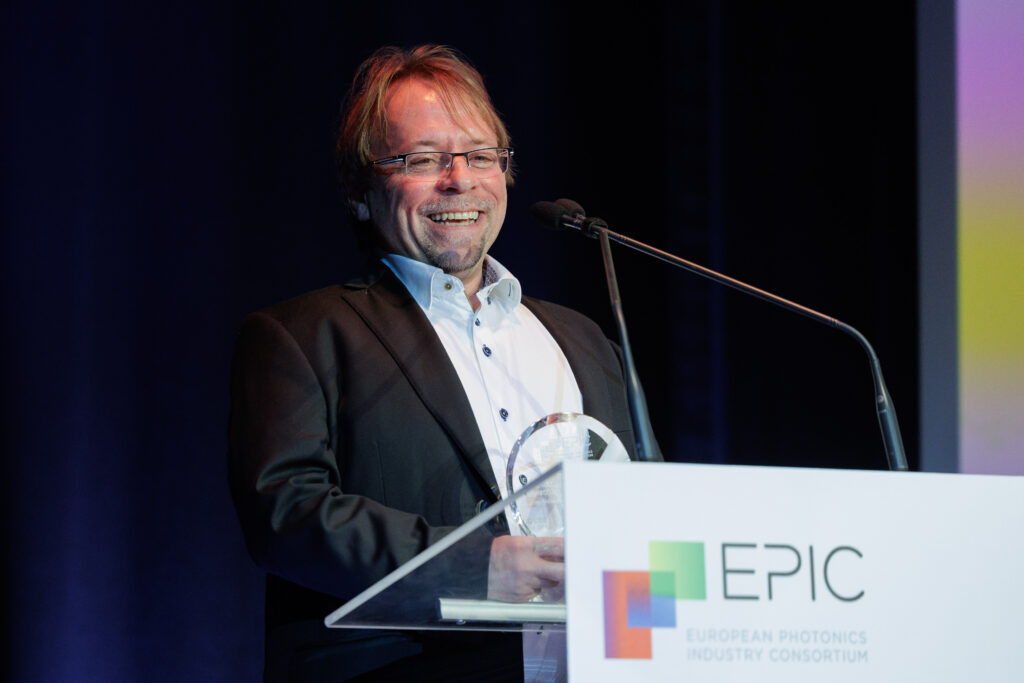
This year, the recipient of the EPIC CEO Award 2024 was Axel Kupisiewicz, Founder and CEO of LASEA. “This award is a recognition of the hard work and dedication of the entire team at LASEA. It also affirms that choosing femtosecond laser technology for micromachining was a wise decision. Additionally, it underscores the importance of always pushing technological boundaries away, alongside our strong market strategy”, said Axel Kupisiewicz (download the press release).
The EPIC Lifetime Achievement Award 2024 recognised the trajectory of Viacheslav (Slava Artyushenko, CEO of art photonics. Commenting on the award, Slava Artyushenko said, “I am honored to receive this recognition from EPIC. For more than 25 years, art photonics has been setting new standards in the development of special fiber for optical measurement technology. The next step for us was to be acquired by a larger group like Nynomic, and this award is a testament to the hard work and dedication of our team” (download the press release).
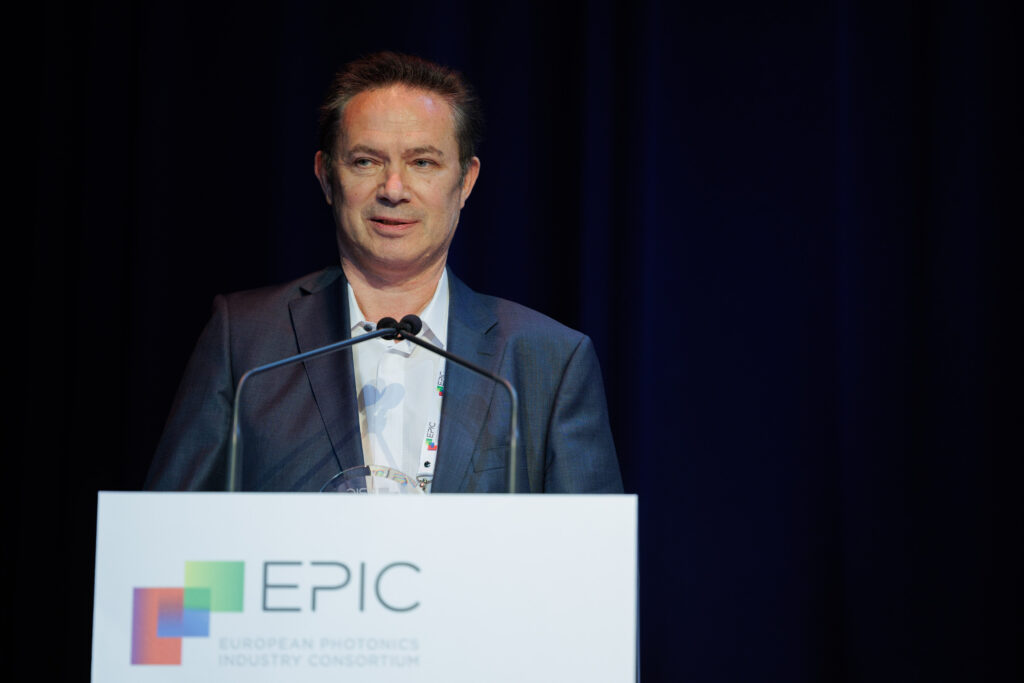
Photonics entrepreneurship and Innovation Management
The agenda of the 3-day conference was oriented toward CEOs, covering strategic topics such as Entrepreneurship, Innovation Management, and New Markets. Other sessions were tailored for CTOs to discuss the challenges and opportunities in photonics technologies.
Below is a summary of some presentations. You can visit the AGM webpage to download all the PowerPoint presentations.
Session Advocacy
Elizabeth Illy, Head of Marketing, HÜBNER Photonics
“Embracing Sustainability – Where do we start?”
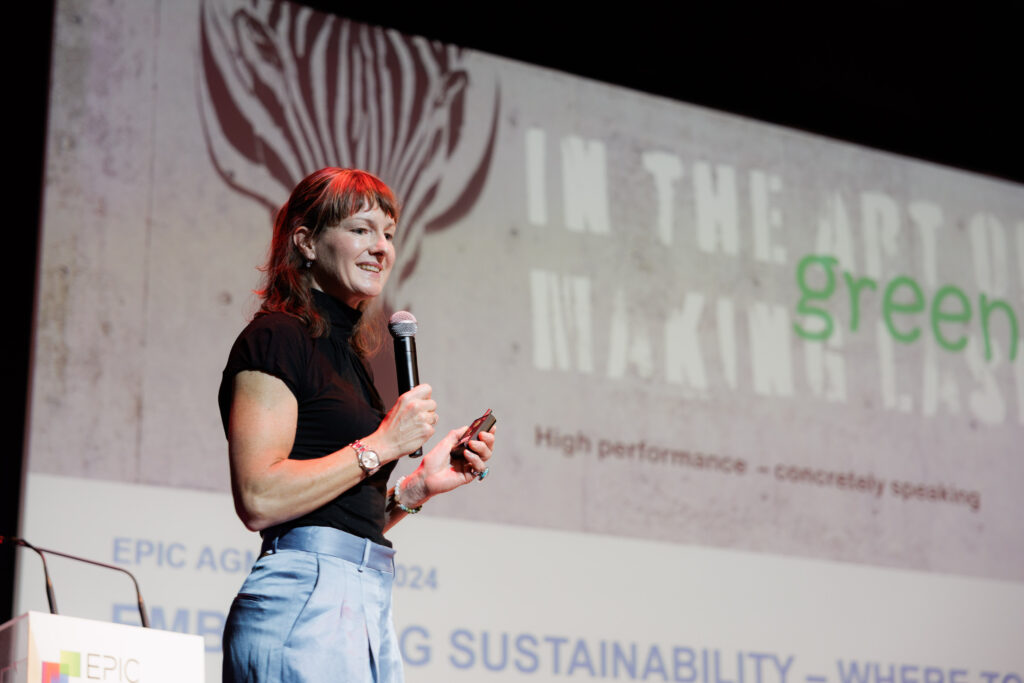
In this presentation, Elizabeth explains the HÜBNER Photonics’ journey to creating a meaningful sustainability policy. She shared how far they have come, some tips for how they got started, what they chose to focus on, and why. As part of the EPIC Sustainability Work Group, we hope these tips may be able to be applied to other SMEs who are interested in embracing sustainability and maybe are unsure where to start and what’s involved. For those planning to initiate a sustainability plan, consider joining the EPIC Sustainability Workgroup, co-chaired by Elizabeth Illy.
Session Entrepreneurship, Technology, Innovation, and Competitiveness
Berthold Schmidt, CTO, TRUMPF
“Short Pulse Lasers: From Tin Droplets to Secondary Sources”
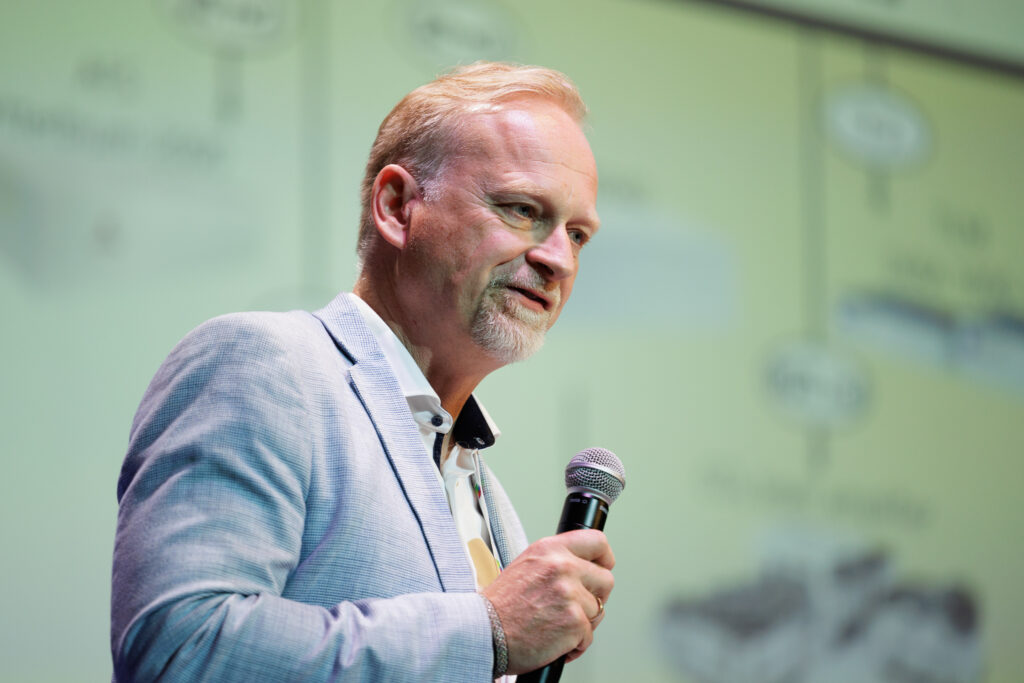
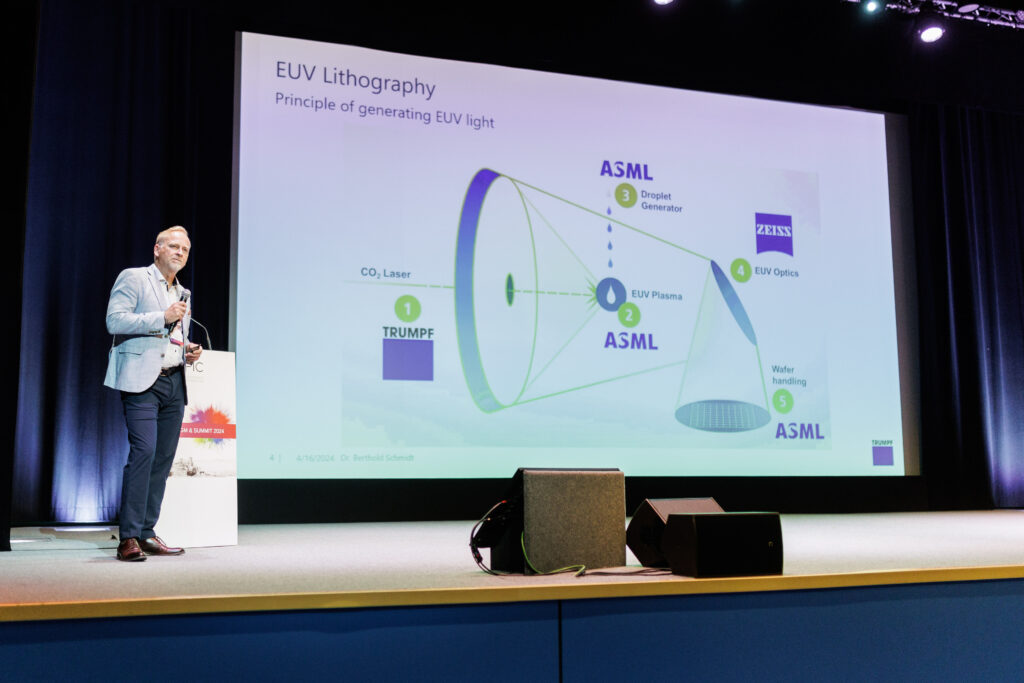
TRUMPF’s success story is strongly linked to the evolution of the laser. Starting with the first demonstration of sheet metal cutting using light in 1997, lasers are now an indispensable tool for material processing in general. Until 10 years ago, this success story was based on using the laser as the primary source for the manufacturing process. Today, TRUMPF lasers drive the generation of extreme-ultraviolet radiation for lithography systems, which allows large semiconductor foundries to shrink the size of transistor nodes, pushing our digital world to the current limits.
The next iteration of secondary radiation sources will be based on new laser concepts and target materials to cover new wavelength ranges of the electromagnetic spectrum, like X-Ray radiation, and to realize highly brilliant neutron and proton sources.
In summary, this will push the limits of laser-driven sources of secondary radiation towards new markets and novel applications like medical imaging, and treatment, as well as industrial metrology.
Axel Kupisiewicz, Founder and CEO of LASEA
“From Idea to Business: an Entrepreneurial Path to Success in the Laser Processing Industry”
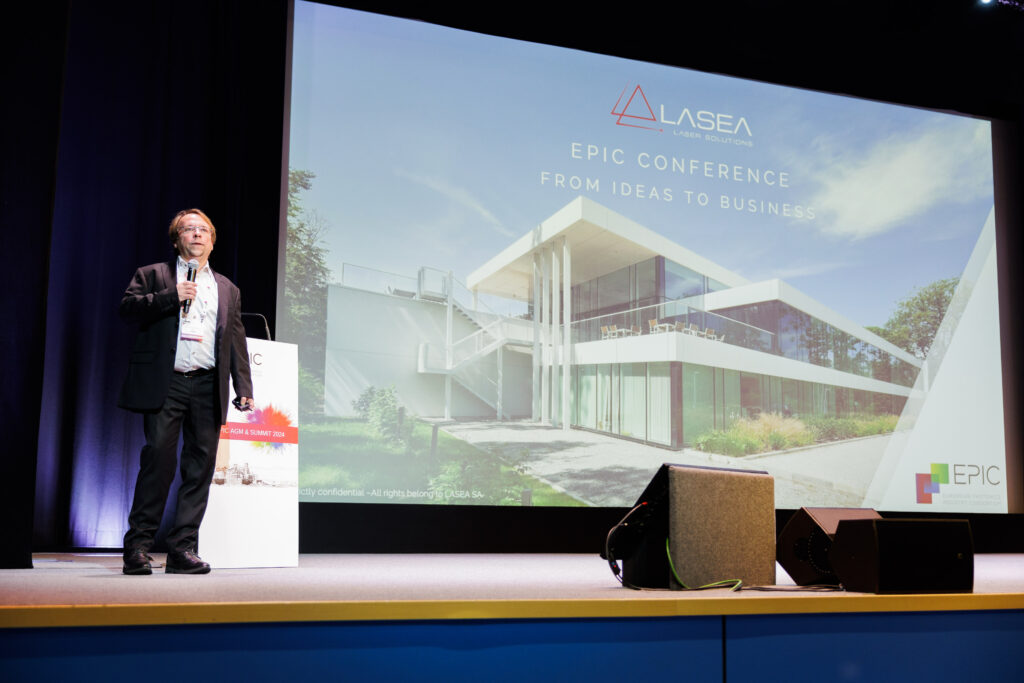
In 1999, at the age of 25, Axel Kupisiewicz founded LASEA. He remains CEO and the group’s reference shareholder. LASEA started out in a garage with a firstlaser and a set of 3 patents using ns lasers for material processing. With only 3 people at that time, LASEA commissioned its first laser machine at a major glass manufacturer for decoating windscreens. Several production lines for the automotive industry followed. In 2003, LASEA partnered with the company Amplitude to develop a new-generation femtosecond laser amplifier. Several European projects were obtained to develop the technology and in 2011, LASEA introduced successfully in Munich the 1st fs micromachining solution. LASEA then started focusing on this technology and grew by 30% each year!
The past 12 years, LASEA has grown organically and externally from 10 people to an international Group with nearly 200 people and revenues of €42m. LASEA is serving some of the world’s largest companies and is continuously pushing boundaries in laser technologies. Almost 20% of revenues are invested in R&D, enabling LASEA to hold 120 patents. As a vision, LASEA wants to play a societal role with sustainability in mind and works to become the first laser company in the world to obtain the B-Corp label. Such a success does not come seamlessly, and Axel will detail the most critical milestones of LASEA’s growth.
Michael Heuken, VP Advanced Technologies, Aixtron
“40 years of innovation: lessons learned in epitaxial technology and related business”
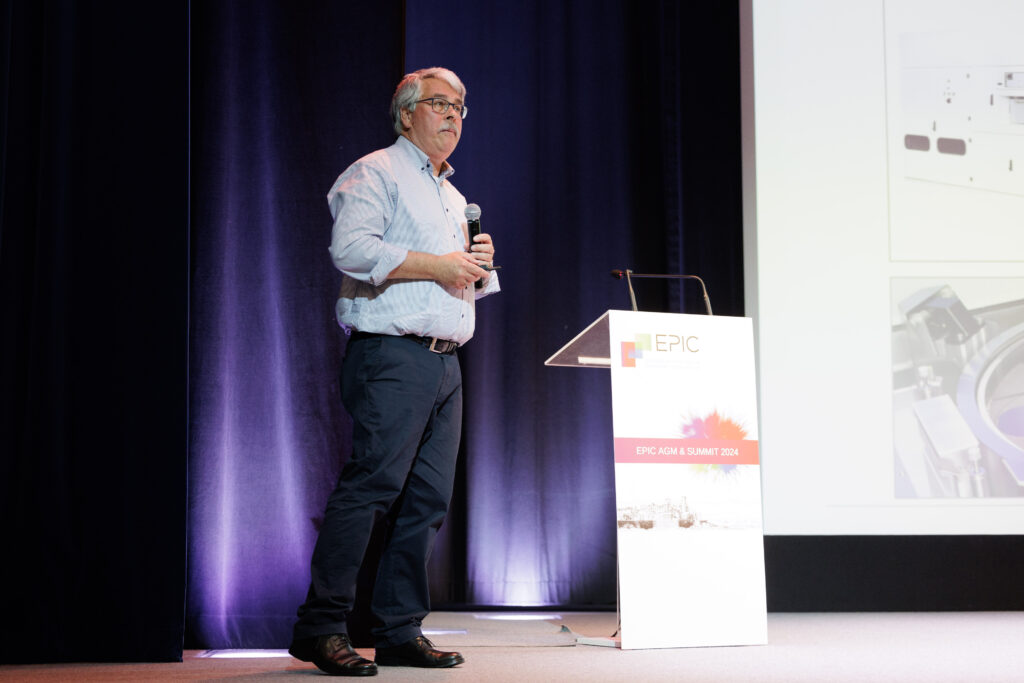
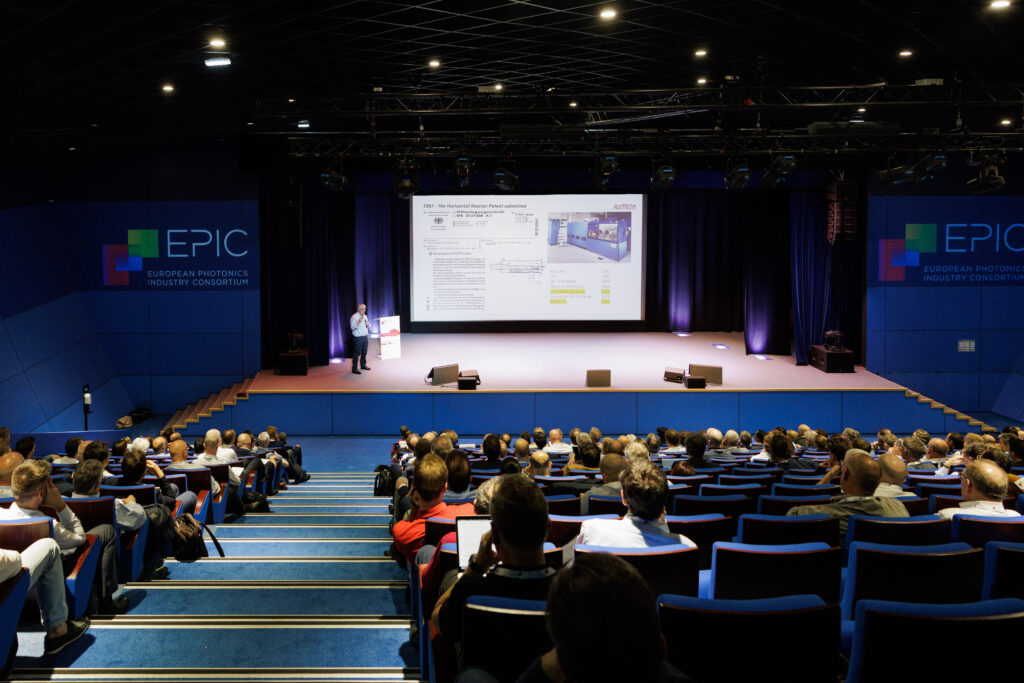
AIXTRON SE is a leading global provider of deposition equipment to the semiconductor industry with subsidiaries in Europe, Asia and in the United States. The Company’s high-tech solutions are used by a broad range of customers for the manufacture of high-performance and optoelectronic applications based on compound semiconductors. These devices are used in a variety of innovative applications and industries. These include laser, LED, display technologies, optical and wireless data transmission, SiC and GaN power electronics, and many other leading-edge applications. The Company was founded in 1983 and is headquartered in Herzogenrath, Germany (City Region of Aachen).
To be successful on the market customer requirements need to be served. The requirements for the process equipment to deposit the layer stacks are multifold, demanding utmost control of dopant concentration, layer thickness uniformity and low defect density of the epitaxial layers. Besides layer quality, the ability to manufacture the device layer stacks reproducibly and economically is crucial to support the growing demand. The focus of epitaxy production technology developments has been put on productivity enhancements concepts like wafer level automation or in-situ metrology to acquire process data for smart system control and predictive maintenance concepts.
After reviewing the current status of MOCVD production technology as key enabling technology for today’s photonic and nanoelectronic applications future challenges and solutions to industrialize MOCVD based devices were discussed.
EPIC SUMMIT Business Track I
Sanjai Parthasarathi, Chief Marketing Officer,Coherent
“Photonics Market – Dynamics, Opportunities and Challenges”
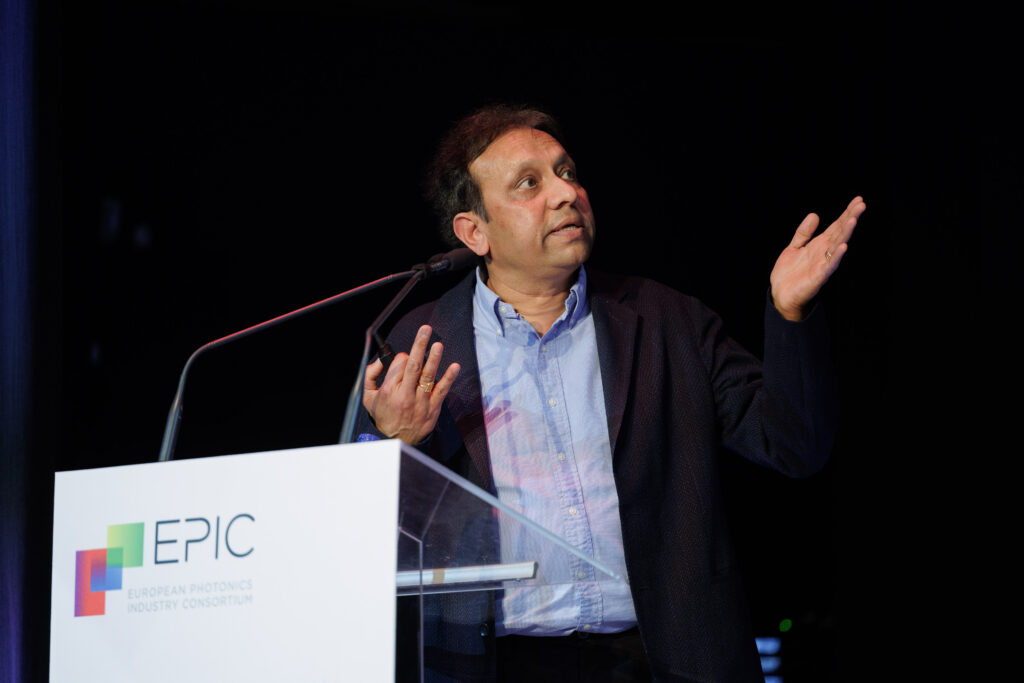
The photonics market is perhaps at the most exciting time in its history driven by megatrends including AI. Opportunities abound across several markets and verticals. Optics, materials and lasers are fundamental enablers of photonics and the applications of tomorrow. The impact of Photonic technologies on our daily lives which is already quite profound is expected to increase even more given the megatrends. The presentation offered an overview of the underlying drivers of photonics market as well as highlight key market dynamics, sizing and segmentation across different market groups, verticals and applications.
Chris Yates, Partner, Vision Ventures
“Machine Vision — Market Status and Strategic Trends”
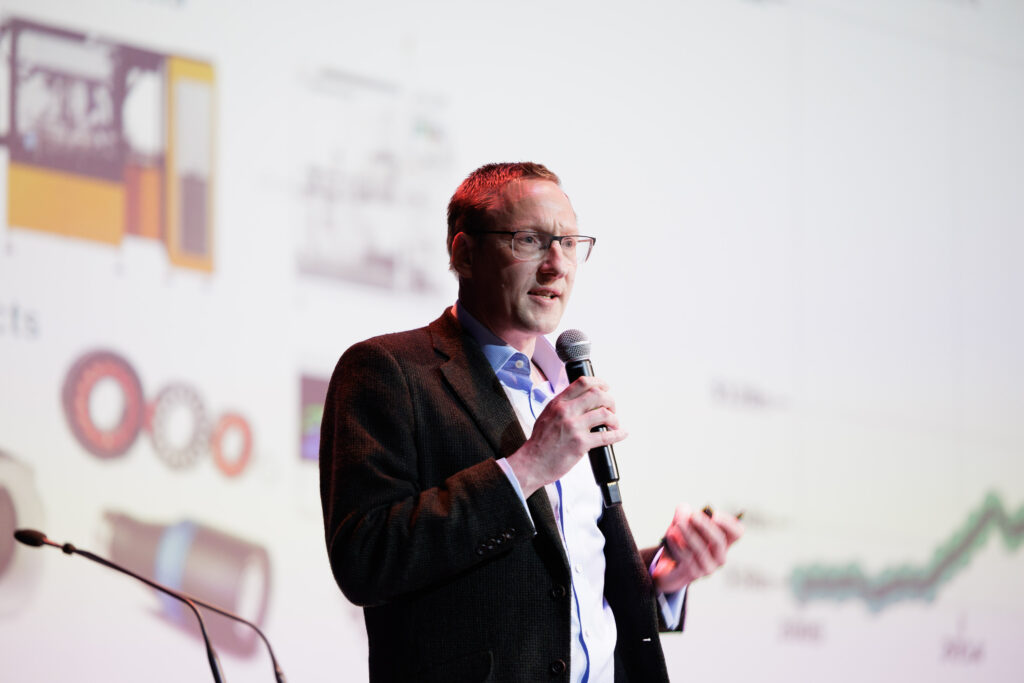
Machine vision is a strategically important technology for many industries and verticals. The vision industry represents a success story over the past four decades, growing from a complex and niche technology to a multi-billion dollar global market. Machine vision uses optical non-contact techniques to capture very high data densities which, when combined with our natural human affinity to interpret images, offers a powerful and flexible approach to automate decision making and extracting valuable insights. In his talk Yates discussed the context and underlying drivers for the rapid growth of the machine vision market over recent years. Several important trends are identified that are expected to have strategic implications for the development of the machine vision market over the next decade.
Thomas Plees, Senior Director Strategic Sourcing & Procurement, ASML
“Changing the world, one nanometer at a time, not alone…”
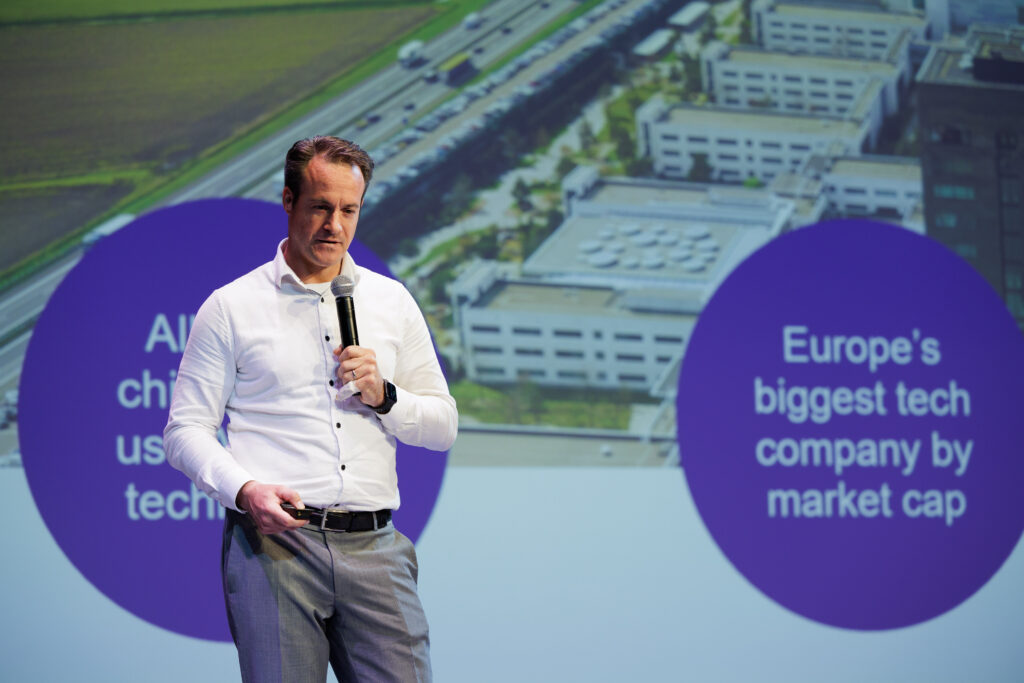
ASML is growing rapidly to help deliver the microchip industry’s long-term need for manufacturing capacity and continued innovation, driven by tech trends such as AI and electrification. Demand on chipmakers is increasing, which puts pressure on ASML and our supply chain. Enabling our supply chain to grow with us toward our 2030 targets calls for an evolution in how we work with our suppliers –it calls for the kind of close relationships we have with our customers. We rely heavily on our suppliers and we need to understand: Are they ready to provide the parts needed for our new technologies? Can they meet our cost targets? Can they meet our quality targets? Can they do so in a sustainable way? At the center of this is mutual trust. We share both risk and reward and work hard at developing long-term relationships with our suppliers and other partners, listening to each other and pushing each other to continuously innovate. This approach allows us to accelerate innovation and provides access to a large leading-edge knowledge base across a wide range of technologies.
Ingolf Cedra, Managing Director, Hübner Photonics
“Strategic Diversification for Growth and Long-Term Corporate Development Case Study: HÜBNER – Family Owned in Transition to a Foundation Company”
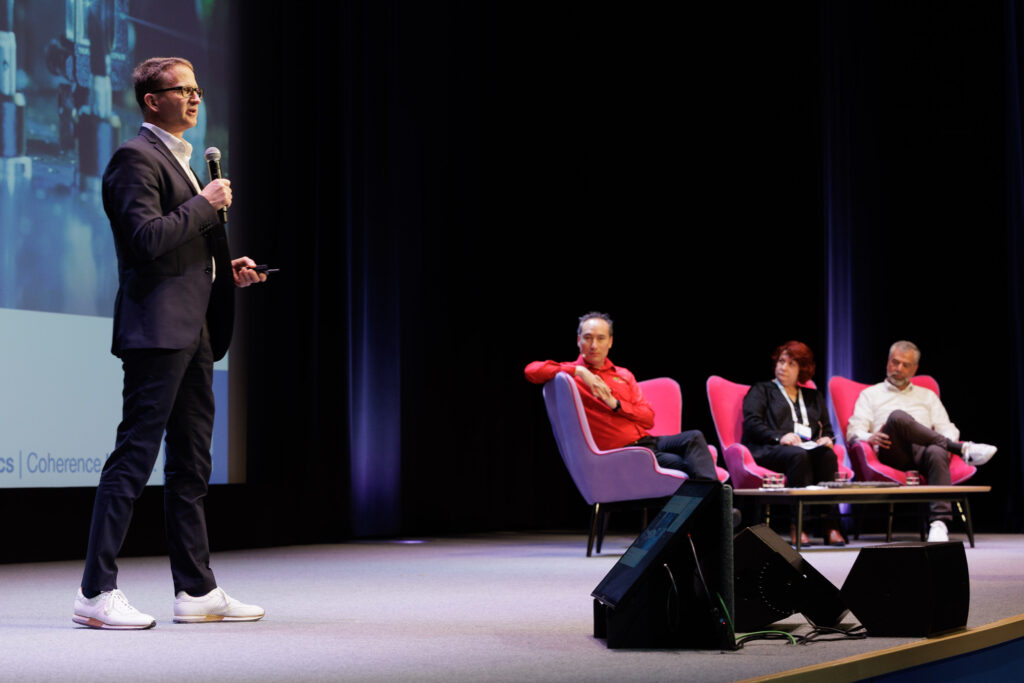
HÜBNER was founded in 1946 and has been growing since then, reaching € 500 million sales forecasted in 2024. The signature product has been the “HÜBNER Gangway” in public transport vehicles – like trams, trains and buses since 1950’ies. With global market shares of well above 50%, organic growth opportunities remain limited by nature. In addition, the owner family has formulated a strong wish to contribute value to Lifesciences. Therefore, HÜBNER started to invest into Photonics-related projects of Fraunhofer that have led to two Prism-Awards (2014) for the tunable laser system C-WAVETM, and the Terahertz system T-CognitionTM. Since then, HÜBNER has been continuously focusing on strategic diversification, which resulted in the new corporate division HÜBNER Photonics (2016) after acquisition of the Swedish headquartered COBOLT AB (2015).
The main shareholder, Reinhard Hübner – son of the founder – and his sister Margrit Kennedy († 2013) have jointly decided to establish the Hübner Kennedy Foundation GmbH as shareholding body of the HÜBNER Group. Long-term stability of the group, independency, sustainable corporate development and employee engagement have always been important to the owner family which shall remain as the overall values and goals in the next decades, backed by the shareholder foundation. That is why earnings are continuously re-invested into operating business for innovations and corporate development.
EPIC SUMMIT Technology Track I
Arvind Patel, CEO, SLTL
“Photonics for Diverse Applications: Leading the Way to Innovation”

In today’s rapidly advancing technological landscape, photonics has become synonymous with innovation, particularly in overcoming intricate engineering challenges. The SLTL Group delves into Laser Material Processing Techniques, revealing their profound impact in sheet metal forming, industry. From laser cutting to additive manufacturing, lasers have revolutionized engineering solutions with unparalleled precision. Notably, in the gems and jewelry industry, lasers have elevated craftsmanship and even facilitated the rise of lab-grown diamonds. In renewable energy, SLTL leads with Quantum technology, harnessing lasers for decentralized energy generation from bio-waste. The fusion of lasers with Industry 4.0 and AI promises limitless innovation. This journey into Laser Technology for Emerging Engineering Challenges illuminates a future where lasers not only solve problems but also guide us towards sustainability and efficiency in engineering.
Philippe Chanclou, Team Manager Fixed Access Networks, Orange Labs

Fiber To the Home is now the dominant technology to achieve the telecommunication access broadband. This arriving of optical fiber in the customer premise comes with several levels of photonic integration in the fiber gateway and at the central office to address this mass market scalability. The evolution of bitrate from 1 Gbit/s to 10 Gbit/s and the future 50 Gbit/s PON (Passive Optical Network) technology paves the way for faster, energy-efficient communication, making it an instrumental technology in today’s digital era. The power of integrated photonics lies in its ability to increase the performances (bitrate, optical budget) and to maintain the compactness.
Besides the conferences, attendees could visit the exhibition area with booths from the following EPIC Members: MPS Micro Precision Systems, Delta Optical Thin Film, Maiman Electronics, EssentOptics Europe, ENSEMBLE3, NTS Optel, Optiwave Systems Inc., Silicon Austria Labs (SAL), Menhir Photonics, Inkron, EPIGAP OSA Photonics GmbH, Hoya, Emberion, Opto, Bay Photonics, RP Photonics, LAMBDA-X High Tech, ElFys, SPIO Systems, Lithium Lasers, Mintres BV, OFS, RETINA project, Imagine Optic and Technologiezentrum Dortmund.
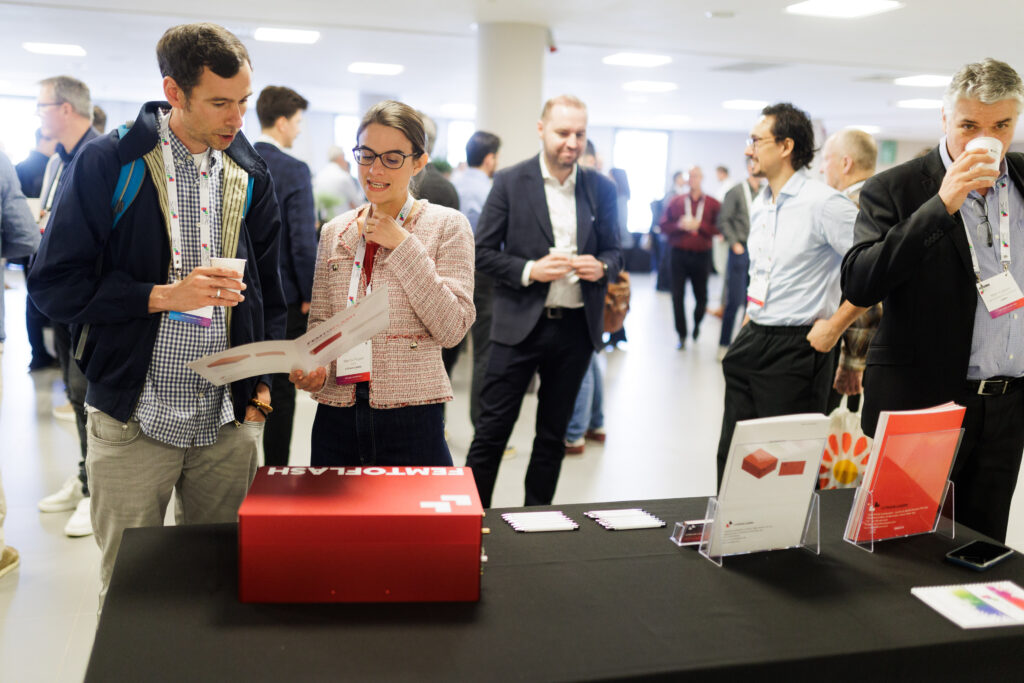
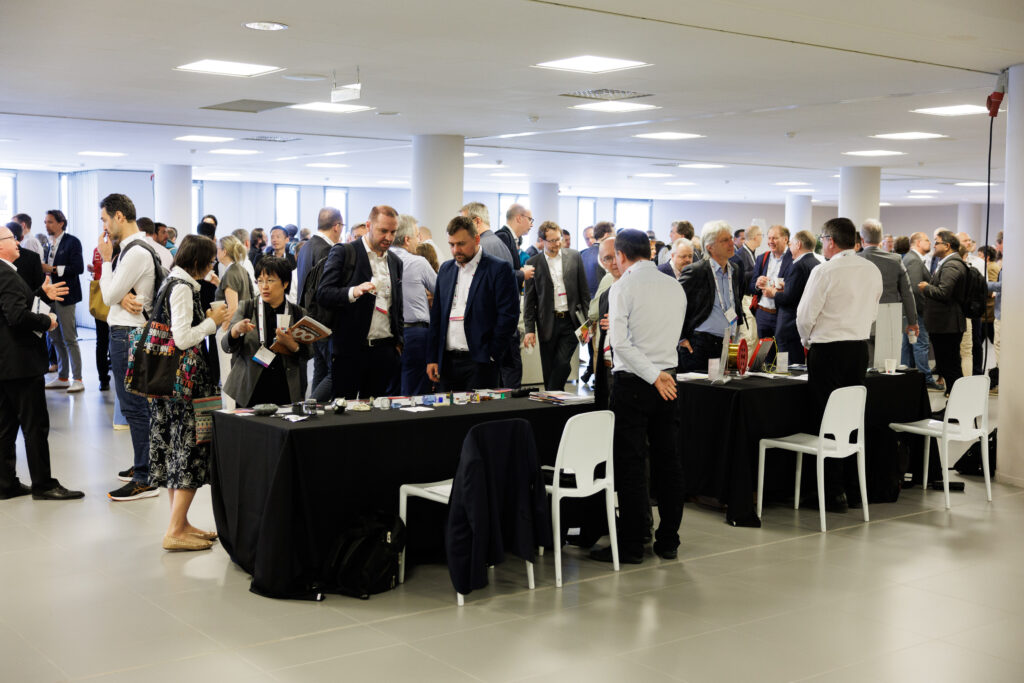
And we can’t have an EPIC AGM without a run! But since we were in the cozy French Riviera, we also tried an early swim and brought photonics to the beach!
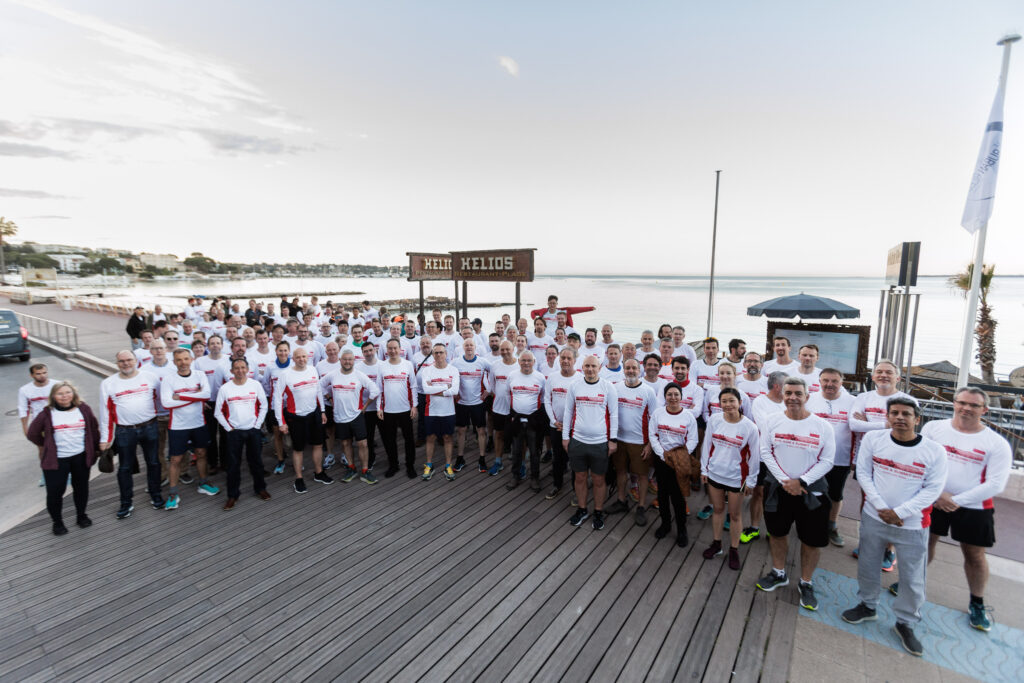

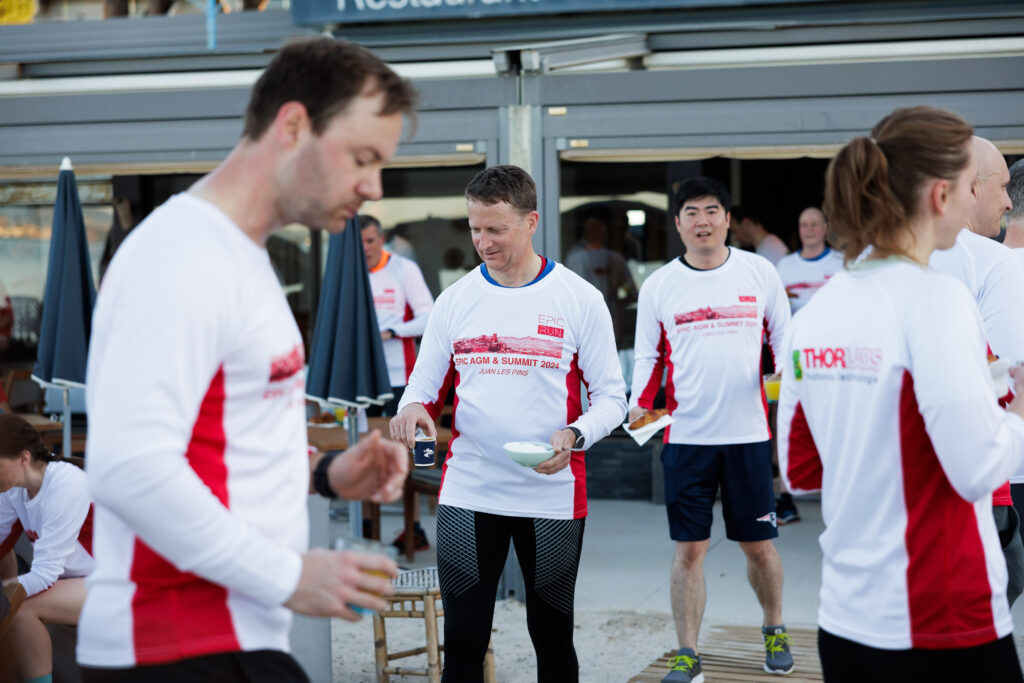
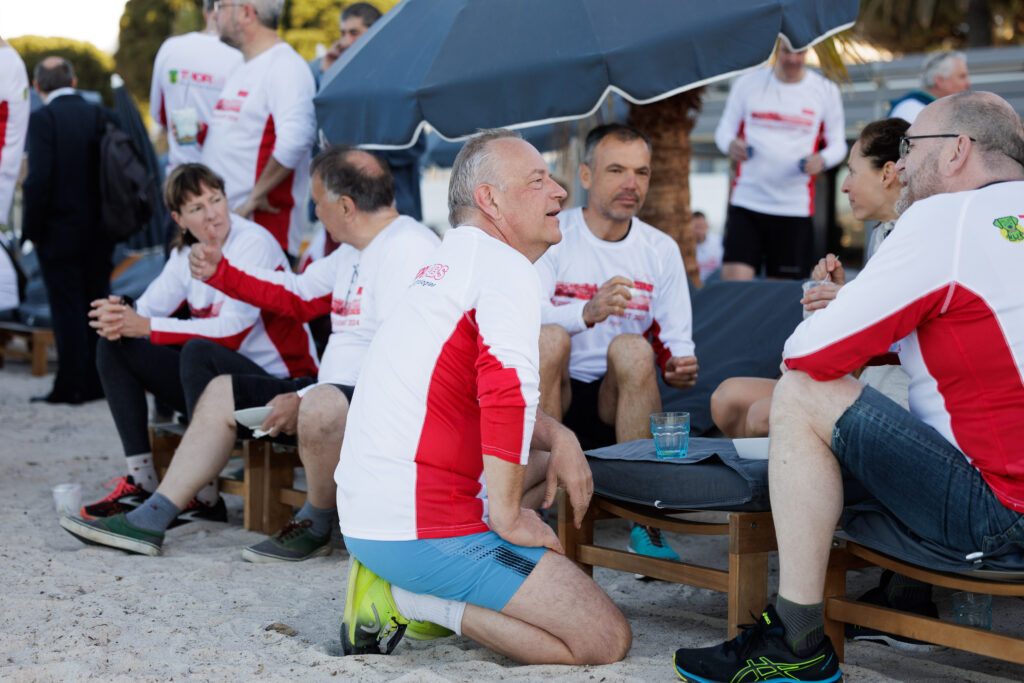

And last but not least, thank you to Thales Alenia Space for opening their doors to some of our members.


